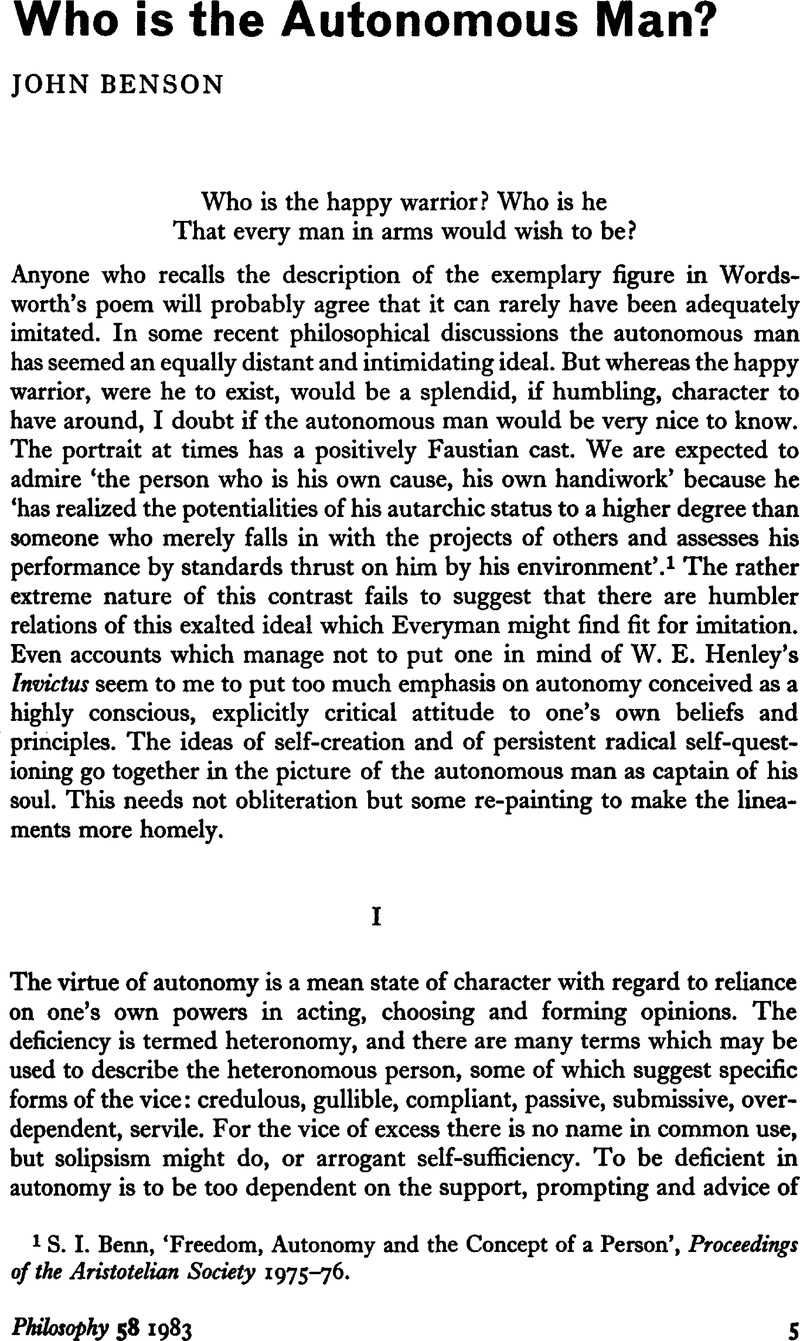Published online by Cambridge University Press: 30 January 2009

1 S. I. Benn, ‘Freedom, Autonomy and the Concept of a Person’, Proceedings of the Aristotelian Society 1975–1976.
2 Cf. R. F. Dearden and Elizabeth Telfer in their symposium, ‘Autonomy as an Educational Ideal’, in Philosophers Discuss Education, S. C. Brown (ed.) (London: Macmillan, 1975).
3 Elizabeth Telfer, op cit. 34.
4 L. Tolstoy, Anna Karenin, translated by Rosemary Edmonds (Harmondsworth: Penguin Classics, 1954), 19.
5 See e.g. Ralph Cudworth, A Treatise Concerning Eternal and Immutable Morality (1731); extracts from Book I in British Moralists 1650-1800, Vol I.D. D. Raphael (ed.) (Oxford University Press 1969), 105ff.
6 In the sense of these terms introduced by J. H. Newman, An Essay in Aid of a Grammar of Assent (New York: Image Books, 1955), Ch. 4.
7 Thomas D. Perry, Moral Reasoning and Truth: An Essay in Philosophy and Jurisprudence (Oxford University Press, 1976), 31f.
8 Bruno Bettelheim, The Informed Heart (London: Free Press, 1970). Benn (op. cit. 130, n. 12) refers to this study of ‘what happens to heteronomous and anomic personalities under conditions of stress’. Those who survived best under these circumstances were almost certainly heteronomous on Benn's criteria.
9 I have profited in writing this paper from comments made on an earlier one on the same topic by my colleague Professor F. N. Sibley and my former colleague Mrs Dorothy Mitchell. They will have forgotten, I have not, and wish to thank them.